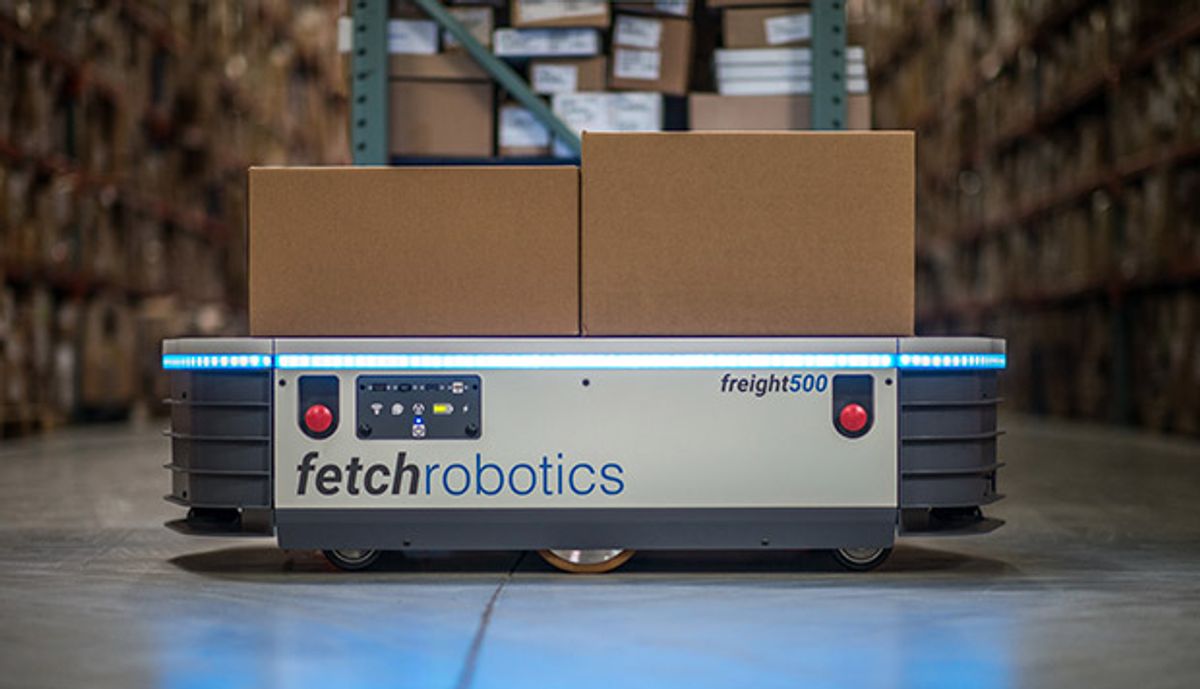It’s a good sign for the robotics industry that more and more robotics companies are starting to make major announcements at specialized events and trade shows, indicating that their robots are ready for tough, real-world applications. This week at ProMat, “the premier showcase of material handling, supply chain, and logistics solutions,” Fetch Robotics is showing off two very new, and very large, stuff-transporting robots.
This video shows the Freight 500, which can handle 500 kilograms of payload, or generally something about the size of a “case,” which I guess is a standard unit in the area of “material handling, supply chain, and logistics solutions.” Another standard unit is a pallet, which is significantly bigger, so Fetch also designed the Freight 1500 to carry 1500 kg:

The Freight 1500 weighs just under 470 kg all by itself, but it’s only 35.5 centimeters (14 inches) tall, which is the same height as its smaller siblings. It has lidar sensors front and back, a forward-looking RGBD camera, and can run for up to 9 hours while recharging itself to 90 percent in just an hour. And most importantly, it has (almost) as many LEDs on it as anyone could ever want, presumably to help keep it from accidentally flounderizing you.
We should point out that Clearpath Robotics, or rather OTTO Motors, started out with a 1500 kg-class mobile robot in 2015, and followed it up with a 100 kg-class mobile robot about a year ago. Strictly in terms of payload, OTTO and Fetch are now closely matched, with Fetch’s 500 kg-class robot perhaps giving them the edge in versatility, at least for now.

As always, though, the really tricky part about robots is in the software, not so much the hardware, points out Fetch CEO Melonee Wise: “In many ways the hardware is extremely similar,” she says. “It basically all comes down to the software, and how the differing sensors are used to autonomously navigate a facility.”
As much as I would love to see Fetch and OTTO’s beefcake robots battle it out in some sort of exciting and dramatic material handling and logistics competition (if such a thing could possibly exist), I would imagine that the market for intelligent robots that can move things safely is large enough to be able to feed Fetch, OTTO, and the handful of other robotics companies in the space right now.
[ Fetch Robotics ]
Evan Ackerman is a senior editor at IEEE Spectrum. Since 2007, he has written over 6,000 articles on robotics and technology. He has a degree in Martian geology and is excellent at playing bagpipes.



